Introduction
In the realm of Autism Spectrum Disorder (ASD) intervention, behavioral approaches play a crucial role in fostering mental health and ensuring equitable opportunities for children with ASD. These approaches are tailored to comprehend and refine behaviors, creating supportive environments that nurture growth and address the unique needs of individuals with ASD. In this article, we explore the significance of evidence-based practices, the various types of Applied Behavioral Analysis (ABA) interventions, and the transformative impact of Early Intensive Behavioral Intervention (EIBI).
We also delve into Naturalistic Developmental Behavioral Interventions (NDBIs), speech therapy, occupational therapy, and physical therapy for ASD. Additionally, we discuss pharmacological approaches, educational strategies, social-relational approaches, and the benefits of additional therapeutic options such as music, art, and animal-assisted therapies. By understanding and implementing these approaches, we can empower parents and professionals to support the well-being and development of children with ASD, ensuring their meaningful inclusion in all aspects of life.
Behavioral Approaches
An essential aspect of promoting mental well-being and guaranteeing equal chances for all children, including those with Autism Spectrum Disorder (ASD), resides in the significant incorporation of these people in the educational, domestic, and recreational aspects of their lives. Behavioral approaches are pivotal in actualizing this inclusion, as they are tailored to comprehend and refine behaviors to enhance favorable development. These approaches are essential in creating supportive settings that foster the development of people with ASD, addressing both their unique requirements and the valuable inputs they provide to their communities.
The prevalence of ASD in adults in the U.S. is significant, with current estimates at 1 in 45. Recognizing the signs and understanding ASD is crucial for providing appropriate support. Central to this is the identification of the unique needs of autistic patients and the acknowledgment of their strengths. Establishing trust is also a fundamental aspect of working with people on the autism spectrum, a process that is greatly facilitated by a deep comprehension of their distinct needs.
Behavioral strategies are not only focused on symptom management but also on acknowledging the strengths and capabilities of people with ASD. For instance, when approaching challenges such as anxiety and depression, the therapeutic needs of autistic adults often align with those of the general population. However, it is imperative to adapt these therapeutic approaches to cater to the specific needs of those on the spectrum.
Empirical research underscores the significance of evidence-based practices in supporting people with autism. Thorough assessment of non-drug approaches highlights the need for well-conducted studies that value people with ASD and enhance our understanding. It is imperative that interventions not only demonstrate efficacy but also reflect community values, engender meaningful and lasting change, and report transparently on any adverse events.
Innovation in the field has led to the development of more flexible models of care that cater to the needs of both professionals and patients. For instance, the implementation of hybrid work models and customized care plans has improved the appeal and maintenance of skilled professionals while guaranteeing that people with ASD receive the personalized assistance they require. These advancements reflect a broader trend towards whole-person healthcare, where the complexities of behavioral traits and physical limitations are navigated within a coordinated care team framework, ensuring that each individual is treated with dignity and receives quality healthcare and services.
Applied Behavioral Analysis (ABA)
Applied Behavioral Analysis (ABA) stands as a cornerstone in autism spectrum disorder (ASD) intervention, recognized for its evidence-based approach that is tailored to foster learning and adapt behavior. ABA strategies are designed to impart new skills and mitigate challenging behaviors, a practice that has recently been reinforced by the updated guidelines from the Council of Autism Service Providers (CASP). The third edition of these guidelines underscores the necessity for ABA to be administered with the highest quality to realize its full effectiveness in treating autism.
The core of ABA lies in its organized yet adaptable framework which, when implemented skillfully, aligns with the aspirations of creating a fair environment for all children, including those with ASD. This resonates with the vision articulated by Dr. David (Dan) R. Offord, who emphasized the significance of fair and supportive participation in life's domains for individuals with disabilities, highlighting the importance of addressing both their unmet needs and the strengths they bring to their communities. Such an inclusive approach is pivotal for their mental health and for building a society that truly values equity. Moreover, recent research syntheses highlight the significance of rigorous design in studies for autistic children and youth to accurately assess their outcomes and prevent potential harm, emphasizing the relevance of high-quality ABA practices.
With the newest ABA practice guidelines, there is a renewed dedication to guaranteeing that supports not only promote the growth of individuals with autism but also uphold their dignity and respect. This aligns with the long-term goal of providing timely diagnoses and access to suitable measures, services, and supports that can maximize positive outcomes across the lifespan, as highlighted by advocacy groups like the Autistic Self Advocacy Network (ASAN).
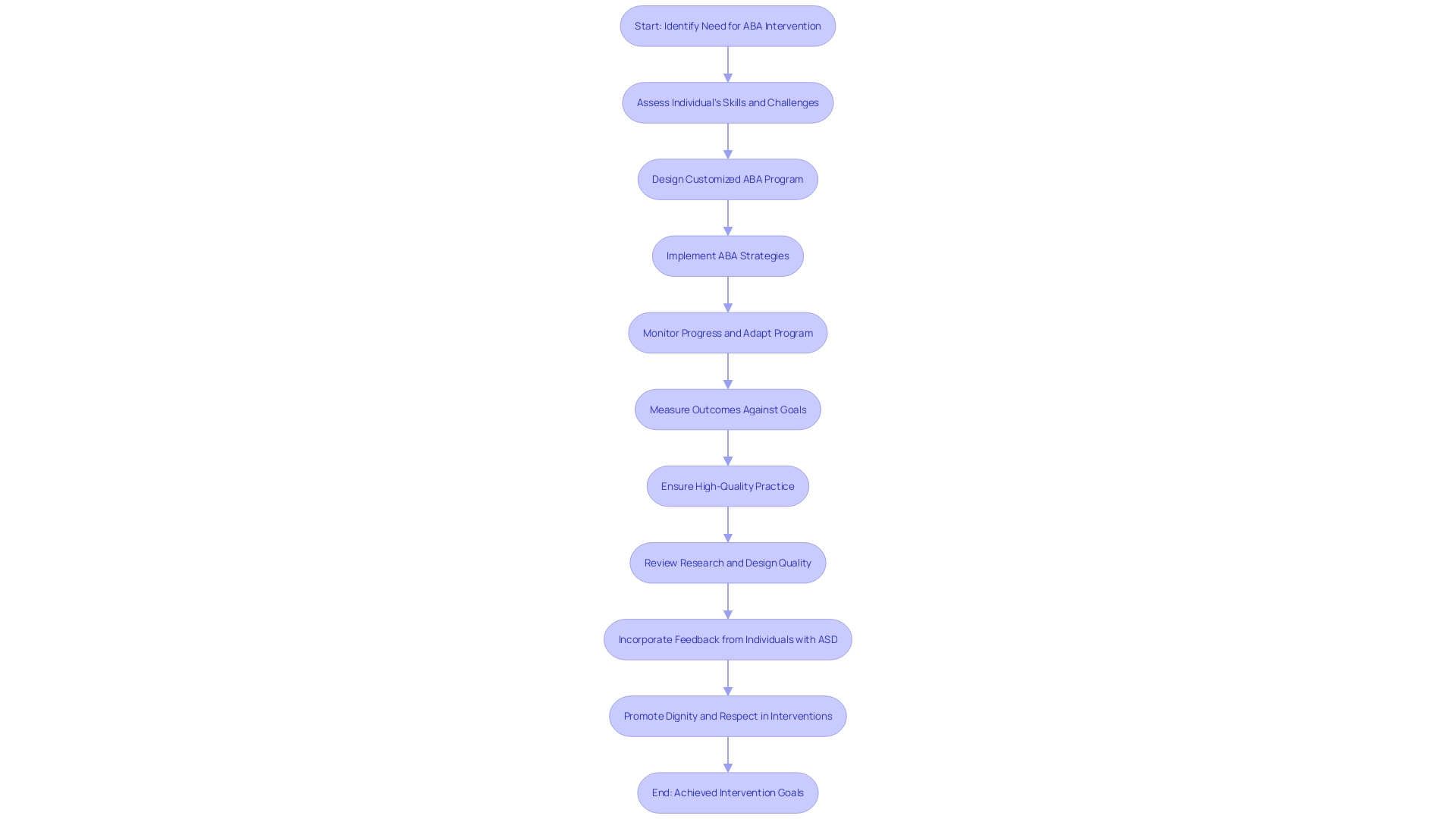
Types of ABA Interventions
The landscape of early intervention for Autism Spectrum Disorder (ASD) is rich with diverse strategies, and Applied Behavior Analysis (ABA) stands at the forefront with its evidence-based techniques. Among these, discrete trial training focuses on structured, one-on-one sessions where skills are broken down into small, manageable parts. Naturalistic teaching strategies embed learning opportunities in everyday activities, harnessing the inherent interests of individuals. Pivotal response training focuses on enhancing fundamental aspects of a young individual's growth that are vital for various social and cognitive abilities, such as drive and the capacity to react to multiple signals.
In the essence of impartiality and justice, advocated by Dr. David (Dan) R. Offord, these measures are customized to address the distinctive requirements of every individual, guaranteeing that every youngster has the chance to engage and flourish in crucial aspects of life, such as education, household, and recreational pursuits. This individualization addresses the unmet needs of autistic children, including those with additional emotional and behavioral challenges, promoting inclusion and reducing stress for both children and their caregivers.
Recent updates to the ABA Practice Guidelines by the Council of Autism Service Providers highlight the importance of implementing these strategies effectively. As Lorri Unumb, CEO of CASP, emphasizes, ABA's effectiveness hinges on its correct application. These guidelines serve as a guiding light for practitioners, ensuring that the measures implemented are of the highest standard, which is crucial for maximizing positive outcomes.
Thorough assessment of nonpharmacological approaches demonstrates that despite the abundance of research, deficiencies in study design frequently mask the genuine extent and efficacy of these methods. This requires a diligent, informed approach to research and practice, respecting the diverse experiences of individuals with autism and acknowledging their valuable contributions to the field. According to Dr. Jan Blacher, the comprehension of autism is continuously developing, and as a result, there is a necessity to adjust approaches to the diverse capabilities and talents of children with autism.
Parents and professionals alike benefit from understanding the range of ABA-based interventions available. By fostering understanding and implementing best practices, we can support the developmental journey of individuals with ASD, ensuring that the 'race' they are running is indeed a fair one.
Early Intensive Behavioral Intervention (EIBI)
Early Intensive Behavioral Intervention (EIBI) stands out as a comprehensive approach that offers young individuals with Autism Spectrum Disorder (ASD) the opportunity to maximize their potential through a highly individualized and intensive program. The core of EIBI lies in its individualized nature, concentrating on a wide range of developmental areas to promote inclusion and equip individuals with the tools they need for successful transitions into elementary school and community life.
EIBI is lauded as a "gold standard" in the realm of early autism care, particularly in the United States. It involves one-on-one support, spanning 20-40 hours per week, tailored to the unique needs of every individual. The program's structure is systematic and led by adults who are trained to deliver it in a way that integrates seamlessly with daily family routines. In spite of some discussion among clinicians regarding its level, the goal is to integrate these actions in a manner that honors the youngster's growth phase and the everyday routine of the household.
The effect of such actions is extensive. Not only does it support the individual's current developmental stage, but it also establishes a foundation for ongoing inclusion as they grow. The legal frameworks and recommendations provided by the Individuals with Disabilities Education Act (IDEA) and other organizations underline the importance of such inclusive opportunities from the earliest ages.
Autism research has evolved over time, with randomized controlled trials becoming the benchmark for evaluating the efficacy of approaches like EIBI. This change from quasi-experimental research guarantees a stronger and dependable evaluation of how these measures can advantage children with ASD. As research continues to advance, it is imperative that interventions are scrutinized for their effectiveness, potential for harm, and the scope of change they can bring about.
Ultimately, the aim of EIBI and comparable programs is to uphold the principles of fairness and regard for youngsters with disabilities, as promoted by the Interagency Autism Coordinating Committee (IACC) and other organizations, by empowering them to actively and significantly engage in all areas of their lives.
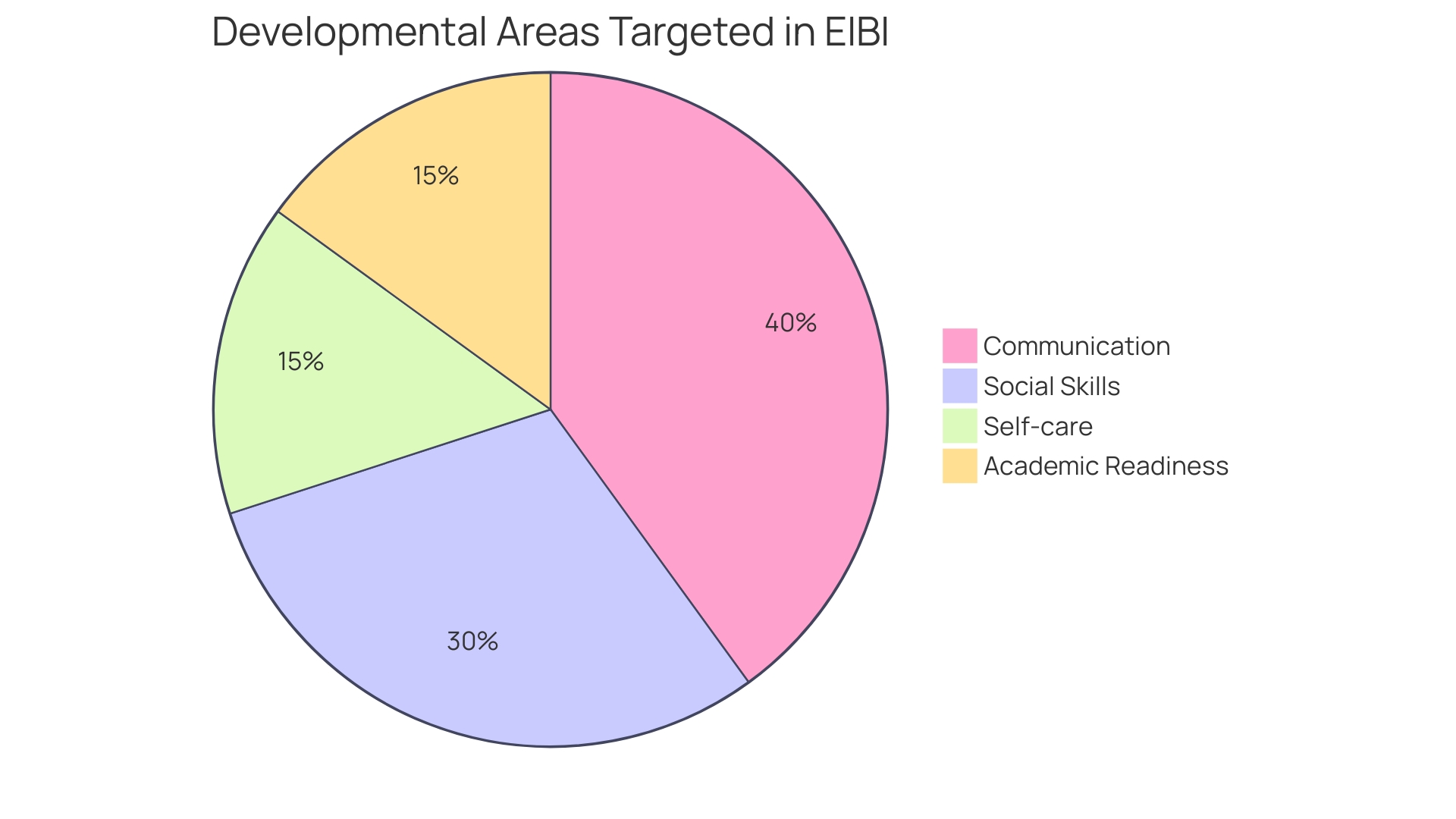
Naturalistic Developmental Behavioral Interventions
Naturalistic Developmental Behavioral Interventions (NDBIs) are leading the way in enhancing the developmental trajectory for individuals with autism by utilizing the potential of their own natural environment and everyday interactions. These interventions are carefully crafted to enrich social communication, enhance play skills, and nurture functional independence. By integrating learning opportunities into familiar settings and activities, NDBIs not only foster skill acquisition but also promote the generalization of these skills across various contexts.
The National Academies of Sciences, Engineering, and Medicine stress the importance of inclusive and fair environments for all individuals, including those with disabilities. This sentiment is echoed by the poignant words of Dr. David (Dan) R. Offord, who emphasized the significance of a 'fair race' for the mental health and well-being of young individuals. NDBIs align with this principle by recognizing the unique needs and strengths of children with autism and by aiming to reduce stress through family-centered support.
Recent shifts in autism research methodology, as documented in peer-reviewed studies and scientific journals, underscore the importance of robust and well-constructed research designs. High-quality studies, including randomized controlled trials, are crucial in determining the effectiveness of approaches like NDIS. This is crucial in a landscape where researchers promote a range of strategies, and where evidence-based consensus is needed to guide clinical decisions and policy.
Research syntheses have emphasized the difficulties in assessing nonpharmacological autism approaches because of design flaws. The National Academies' effort in critically evaluating these studies contributes to the development of approaches that are not only effective but also socially validated and transparent in reporting outcomes and adverse events. By tackling these concerns regarding the quality of research, the scientific community progresses towards offering approaches that are considerate and genuinely helpful for individuals with autism and their families.

Speech Therapy for ASD
Speech therapy is a crucial part of early support for autism spectrum disorder (ASD), especially for those experiencing difficulties in communication. This therapy aims to bolster language development and furnish children with the skills needed to express themselves effectively. Although speech therapy is widely recognized, it's important to acknowledge that research has highlighted some studies with non pharmacological approaches, such as speech therapy, have design flaws. These flaws call into question the effectiveness and the potential for harm, emphasizing the need for critical evaluation of intervention research. Recognizing the crucial role played by persons with autism in advocating for research quality, it's vital that speech therapy practices are based on respectful, well-conducted research that truly benefits the ASD community. By concentrating on evidence-based techniques, speech therapy can greatly enhance the communication abilities of individuals with ASD.
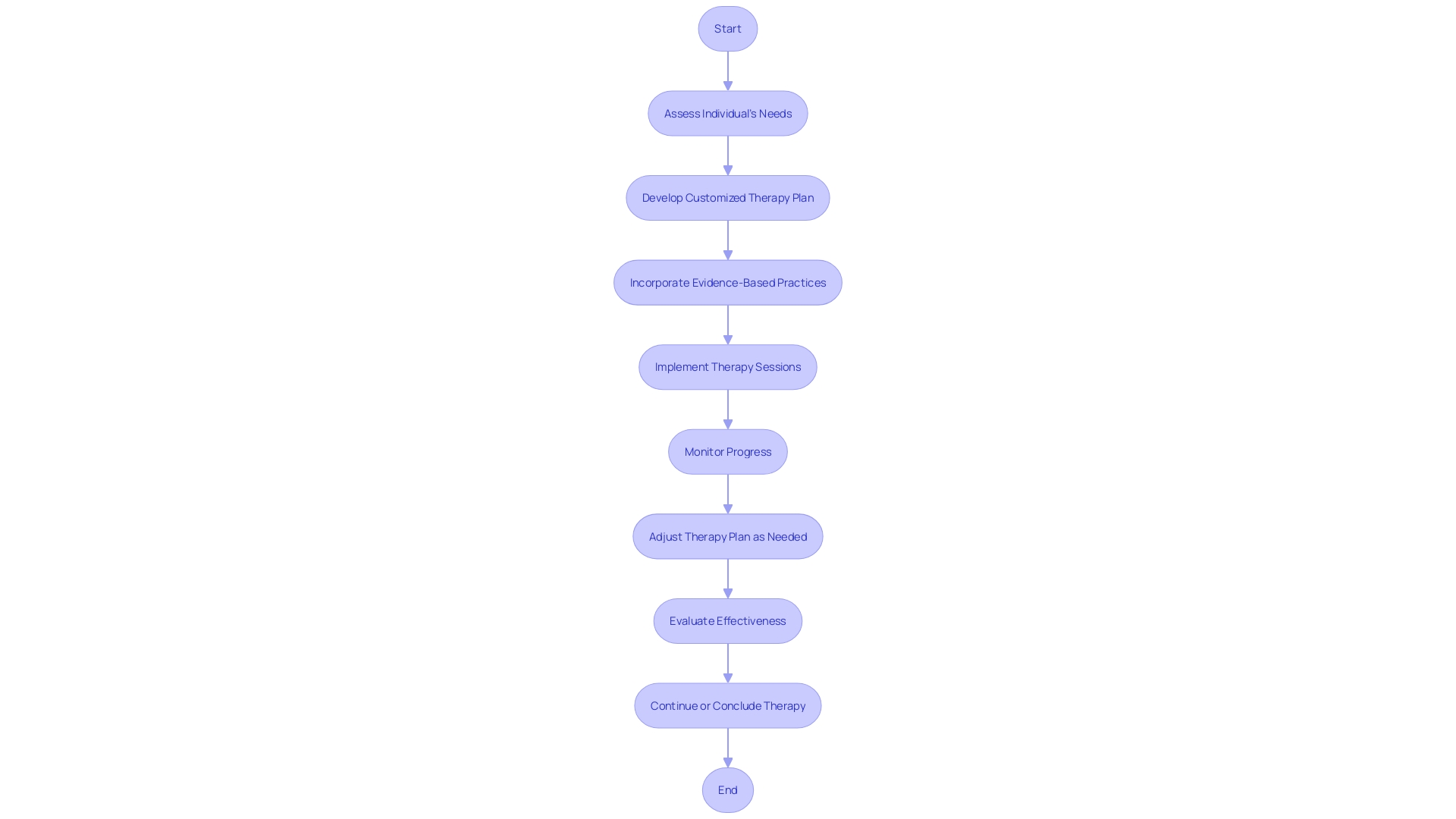
Occupational Therapy (OT) for ASD
Occupational therapy (OT) offers a transformative approach for individuals with Autism Spectrum Disorder (ASD), targeting sensory processing, motor skills, and practical life skills. By incorporating occupational therapy into daily routines, individuals with ASD can experience improvements in their ability to engage and participate across various settings—from school to home, to leisure activities. This aligns with the vision of equitable societal participation, where every individual, including those with disabilities, has the opportunity to thrive in a 'fair race,' as eloquently put by Dr. David (Dan) R. Offord. With increasing evidence indicating that early involvement can greatly improve mental health and social well-being, OT emerges as a potent instrument in the health promotion arsenal, allowing individuals to identify and achieve goals, fulfill requirements, and adjust to their surroundings. In addition, the emphasis on rigorous randomized controlled trials in recent autism research highlights the significance of evidence-based practice in choosing approaches. This is especially important as individuals with autism who also experience emotional and behavioral issues are at an increased risk of social exclusion. By prioritizing well-supported approaches like occupational therapy, caregivers can provide the necessary resources to foster their offspring's development and family well-being, counteracting the disparities in employment and income that individuals with autism often face. In the end, the objective is to guarantee that every youngster, particularly those with ASD, have the opportunity to receive the necessary assistance and backing that empowers them to actively engage in their communities.
Physical Therapy for ASD
Physical therapy is a key component of early intervention that can significantly enhance motor skills, coordination, and physical health in individuals with autism spectrum disorder (ASD). It's not just about 'keeping up' in the developmental race; it's about ensuring that every individual has a fair chance to achieve their full potential, as emphasized by Dr. David (Dan) R. Offord. By incorporating physical therapy into a young one's routine, parents can actively contribute to their offspring's engagement in school, home, and recreational activities, which are crucial for mental health and equitable inclusion in society.
Current changes in autism research, supporting randomized-controlled trials, emphasize the increasing focus on evidence-based approaches. This rigorous approach is instrumental in identifying effective physical therapy exercises and activities that can be woven into the fabric of daily life to foster development. With a focus on the individual strengths and challenges of each individual with ASD, especially those facing additional emotional and behavioral problems, physical therapy is tailored to reduce stress and build on the assets they bring to their communities.
To guarantee the efficiency of these measures, it's essential to carefully assess the research and implementation of non pharmacological tactics. This helps to understand the scope of change they may bring and avoid potential harm. With the collective efforts of parents, caregivers, and professionals, physical therapy can be a transformative tool for children with ASD, enabling them to participate meaningfully in all aspects of life and ensuring that the 'race' is indeed fair for every child.
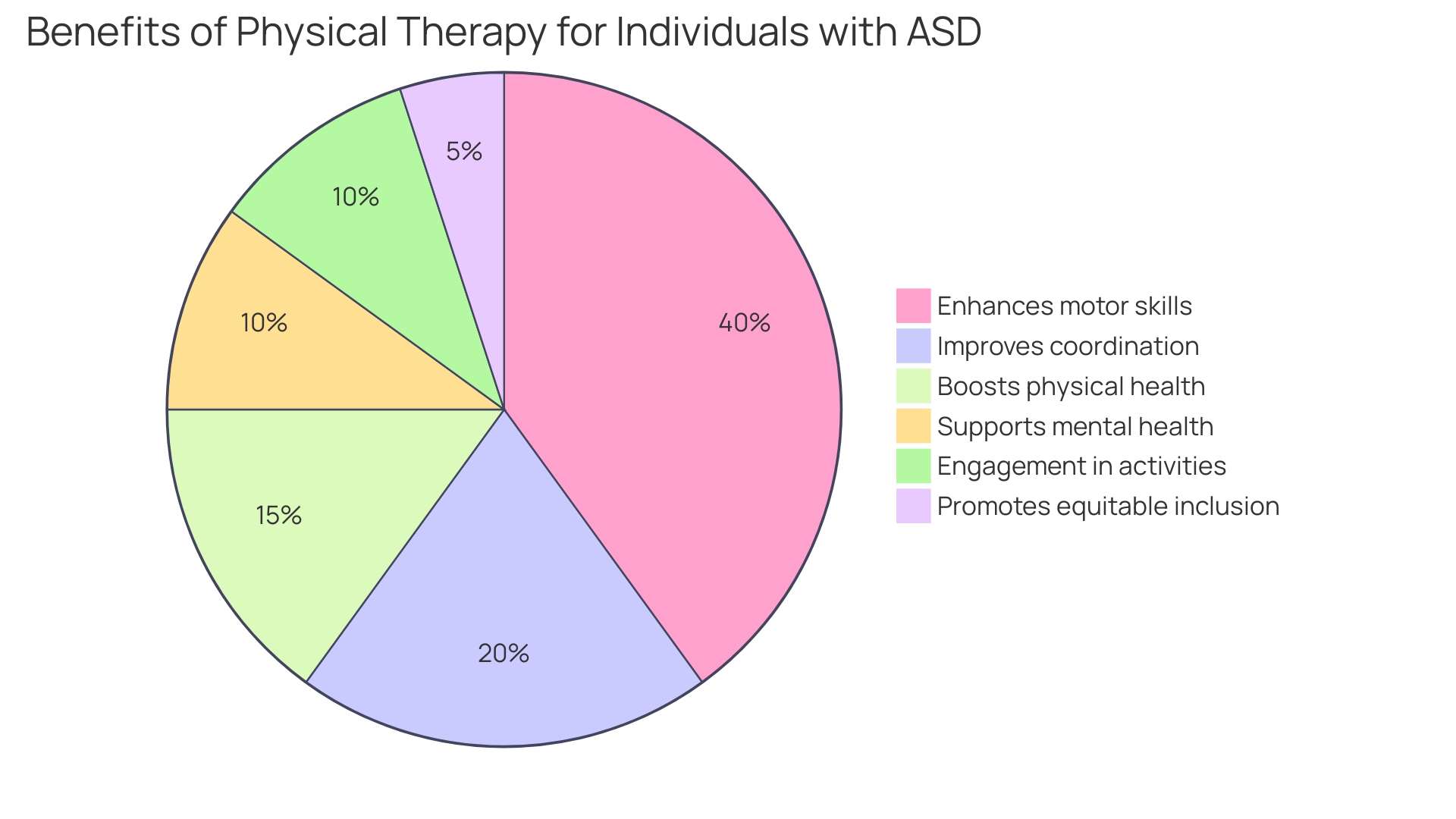
Pharmacological Approaches
When exploring treatment options for Autism Spectrum Disorder (ASD), pharmacological approaches may be part of the equation. Medications can contribute to the management of distinct symptoms and are frequently employed in conjunction with other approaches to enhance the well-being of people with ASD. Recognizing the significance of informed decision-making, it's vital to consider the benefits and implications of these medications.
The U.S. Food and Drug Administration (FDA) is a key player in ensuring the safety and efficacy of medications used in treating ASD. While medications can offer potential benefits, it's essential to consult healthcare professionals to understand the full scope of their impact. Based on recent research, it is essential to thoroughly assess the efficacy and potential hazards of intervention studies, including those involving medication, to guarantee that they are in line with the well-being and dignity of people with autism.
As expressed by caregivers and people with ASD, having clear guidance during treatment decisions is invaluable. As we delve into the commonly prescribed medications for ASD, remember that each individual's experience is unique, and personal medical advice is fundamental in navigating these choices. To optimize favorable results, aligning with suitable approaches, services, and supports customized to each individual's needs is the foundation of ASD management.
Educational Approaches
Structured teaching, visual supports, and inclusive environments are vital aspects of educational approaches in early support for children diagnosed with Autism Spectrum Disorder (ASD). By focusing on personalized learning opportunities, these approaches aim to promote both academic and social development, allowing individuals with ASD to flourish.
Structured teaching, a pillar of early intervention, offers a predictable and organized framework for learning, which can be particularly beneficial for individuals with ASD who may struggle with unstructured environments. This approach utilizes the strengths and interests of the individual, resulting in a customized educational experience that can greatly enhance engagement and retention.
Visual supports, another important approach, offer individuals with ASD a method to navigate their daily routines and comprehend complex ideas through visual cues. This can include picture schedules, charts, or even apps designed specifically for ASD intervention. Research from the National Academies of Sciences, Engineering, and Medicine highlights the significance of these tools in improving communication and reducing anxiety, which can be common obstacles for individuals with ASD.
Inclusion programs, meanwhile, ensure that individuals with ASD are not segregated from their peers and have the opportunity to participate in mainstream educational settings. This exposure to a broader social environment is critical for developing social skills and fostering a sense of belonging. It aligns with the legal foundations supporting inclusion in early childhood as delineated by the Individuals with Disabilities Education Act (IDEA), which advocates for inclusive early learning opportunities for all individuals.
An approach that focuses on the strengths and talents of individuals with ASD, as recommended by social worker Bertha Reynolds, enhances these educational strategies. This method can change the learning experience, enabling individuals with ASD to achieve their maximum potential in a supportive and empowering setting.
Considering the advantages of these educational methods, it is essential to persistently promote public awareness and comprehend the scientific evidence supporting the incorporation of individuals with disabilities. Strengthening the legal basis for inclusion and exchanging resources for high-quality personalized programming are measures towards guaranteeing a just and equitable educational experience for all youngsters, as envisioned by the late Dr. David (Dan) R. Offord.
Recent initiatives, like Emirates and Dubai International Airport's collaboration with local schools and autism groups, demonstrate the significance of inclusive practices beyond the classroom. By facilitating rehearsal flying experiences, they empower neurodivergent individuals, like Humza, to navigate public spaces confidently, setting a precedent for broader societal inclusion of individuals with ASD.
Social-Relational Approaches
Embracing social-relational approaches in early intervention for Autism Spectrum Disorder (ASD) is instrumental in developing social skills, cultivating meaningful relationships, and advancing social inclusion. These approaches aim to equip individuals with ASD with the necessary tools for engaged, peaceful, and well-supported participation in the major domains of their lives, including school, home, and leisure activities. One of the main strategies involves social skills groups, which offer a structured setting for individuals to learn and practice interaction patterns in a group environment. Peer-mediated approaches include instructing peers who do not have disabilities to assist in enhancing the social and communication abilities of individuals with ASD, promoting inclusivity and reciprocal learning. Furthermore, social stories are personalized accounts that depict social situations to aid individuals in comprehending and reacting suitably to everyday social cues. These interventions are not just about addressing unmet needs; they also highlight and leverage the unique assets that individuals with ASD bring to their communities. By reducing chronic stress and creating equitable opportunities for all individuals, including those with AS, we lay the groundwork for their mental health and overall well-being. Such initiatives resonate with Dr. David (Dan) R. Of ford's vision of a fair race for every young individual, where the equitable support of individuals with disabilities is a cornerstone of societal equity. It's crucial, though, to recognize that while these approaches are encouraging, seeking guidance from a healthcare specialist is essential to customize the treatments to the specific requirements of every individual with ASD. Emphasizing evidence-based practices and ongoing research, including those by the Interagency Autism Coordinating Committee (IACC), ensures that we are not only providing effective support but also continuously improving our approaches based on the latest insights and developments in the field.
Early Intervention Strategies
Early support for Autism Spectrum Disorder (ASD) includes a range of approaches to address the diverse requirements of young individuals. Key methods include structured schedules, which provide predictability; visual supports to aid in communication and understanding; and positive reinforcement to encourage desired behaviors. These strategies are crucial for fostering a supportive environment that promotes successful developmental outcomes. Acknowledging that every child with ASD is distinct, early supports are customized to specific abilities and difficulties. The significance of early intervention is widely supported by the scientific community, with esteemed institutions like The National Academies of Sciences, Engineering, and Medicine advocating for evidence-based practices. Furthermore, legislative measures such as the Individuals with Disabilities Education Act (IDEA) underscore the legal and ethical commitment to inclusive early learning opportunities. As research evolves, agencies like the Interagency Autism Coordinating Committee (IACC) continue to guide improvements in autism services, reflecting a collaborative effort to support people with ASD and their families.
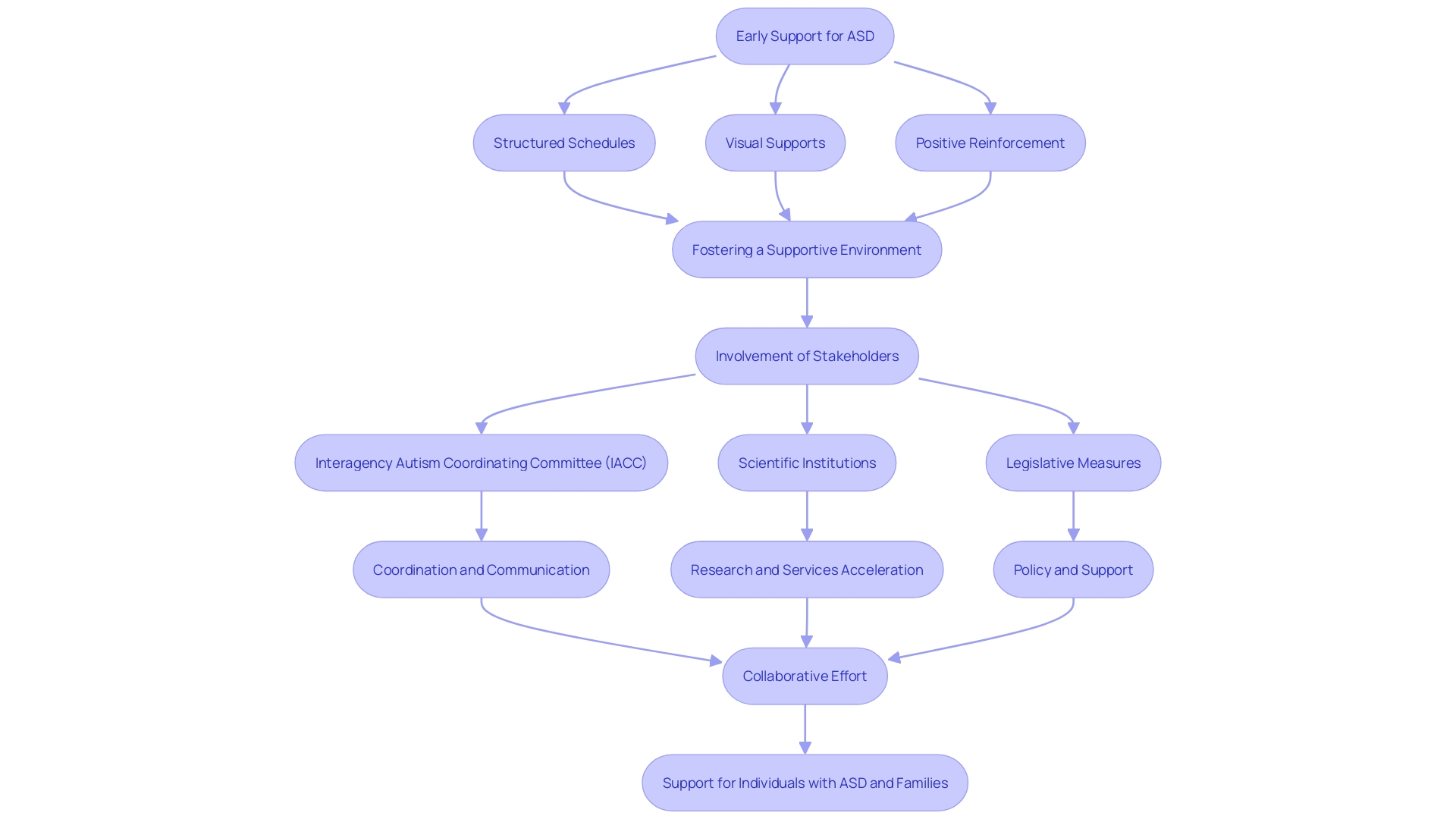
Additional Therapeutic Options
Beyond traditional therapies, those with Autism Spectrum Disorder (ASD) may find holistic benefits in creative arts therapies like music, art, and animal-assisted therapies. Music therapy, for instance, is recognized for its effectiveness in enhancing mental health, communication, and emotional well-being. It involves using music actively or receptively to improve one's psychological state and is considered low-risk. Professionals trained in music therapy utilize its power to assist people coping with a variety of challenges, including cognitive disabilities and mental health disorders such as schizophrenia and depression.
Art therapy provides another avenue for expression when words are insufficient. This form of therapy has shown promise in improving focus, processing emotions, boosting communication, and raising self-esteem. It’s not just for those with mental health conditions; anyone can benefit from engaging in artistic activities, which can be both enjoyable and therapeutic. Evidence suggests that professional art facilitators can significantly enhance physical and mental health.
Lastly, the companionship and support offered by animals in therapy settings can be particularly comforting. Animal-assisted therapy can contribute to the well-being of people with ASD by promoting social interaction and reducing anxiety.
It's important to note that while these therapies are valuable, their effectiveness can vary, and research continues to evolve. As with any therapeutic approach, it is crucial to consider the individual needs of each person with ASD and to consult with healthcare professionals to create a comprehensive treatment plan.
Conclusion
In conclusion, behavioral approaches, such as Applied Behavioral Analysis (ABA) and Early Intensive Behavioral Intervention (EIBI), are crucial for supporting the well-being and development of children with Autism Spectrum Disorder (ASD). These evidence-based strategies comprehend and refine behaviors, creating supportive environments that address the unique needs of individuals with ASD.
ABA stands as a cornerstone in ASD intervention, fostering learning and behavior adaptation. Recent guidelines emphasize the importance of high-quality implementation to maximize positive outcomes and honor the dignity of individuals with autism.
Early intervention strategies, including ABA interventions and Naturalistic Developmental Behavioral Interventions (NDBIs), promote inclusion and reduce stress for both children and caregivers. These interventions enhance skill acquisition and generalization across contexts, supporting equitable opportunities for children with ASD.
Speech therapy, occupational therapy (OT), and physical therapy are vital components of early intervention, focusing on language development, sensory processing, motor skills, and physical health. These therapies are tailored to each child's strengths and challenges, ensuring equitable participation in various domains.
Pharmacological approaches can manage specific symptoms of ASD, but it's crucial to consider their benefits and implications. Informed decision-making and consultation with healthcare professionals are essential.
Educational approaches, such as structured teaching and visual supports, foster academic and social development, empowering children with ASD to reach their full potential.
Social-relational approaches, including social skills groups and peer-mediated interventions, promote social skills, meaningful relationships, and inclusion for children with ASD.
Additional therapeutic options, such as music, art, and animal-assisted therapies, offer holistic benefits, enhancing mental health, communication, and well-being.
By implementing these approaches, parents and professionals can support the well-being and development of children with ASD, ensuring their meaningful inclusion in all aspects of life. Together, we can create a society that values equity and empowers individuals with ASD to thrive.




